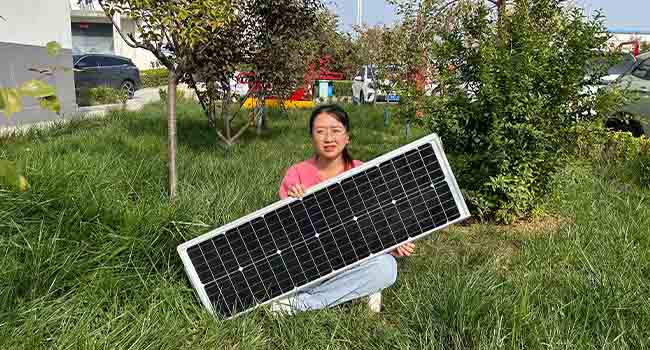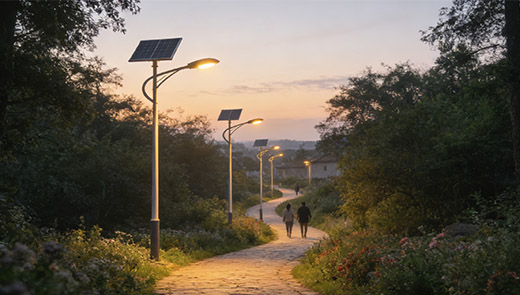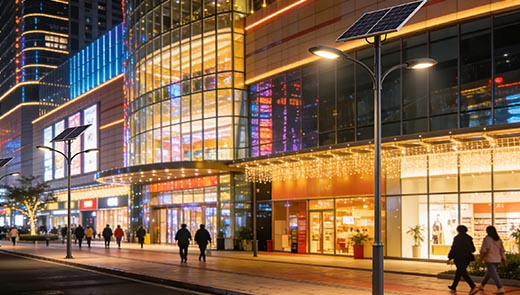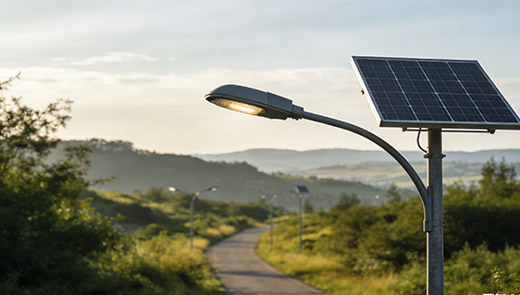What are the Materials of Solar Street Lights?
As an important part of sustainable lighting, solar street lights play a key role in many scenarios such as city streets and country trails. Their performance, durability and functionality depend largely on the materials used. The right materials allow solar street lights to operate efficiently in different environments and extend their lifespan, while the opposite can lead to frequent failures and increased maintenance costs.
Main Structural Material: Aluminum Alloy Housing Components
Aluminum alloy is the main structural material for solar LED road lighting systems. Thanks to its excellent corrosion resistance and lightweight characteristics, it forms the backbone of most solar street light fixtures, providing strong protection for the internal components against harsh weather while maintaining structural integrity over time.
Typically, aluminum alloy housings are powder-coated or anodized to enhance their weather resistance, ensuring that solar LED road lighting systems can withstand extreme temperatures, heavy rainfall and coastal salt spray. In addition, aluminum's thermal conductivity is critical to dissipate heat and prevent LEDs from overheating, thereby extending the life of the lighting components. Precision die-casting technology is often used in the manufacturing process to create seamless, waterproof housings that meet IP65 or IP67 protection standards.

Protective Cover Materials
Solar LED road lighting system's protective cover and solar panel surfaces are made of high-grade tempered glass or polycarbonate materials. Toughened glass offers excellent optical clarity and scratch resistance to ensure maximum light transmission while protecting internal components from environmental damage, and after special toughening, it is five times stronger than ordinary glass and can withstand the impact of hail, debris and vandalism.
Polycarbonate alternatives offer similar protection with greater flexibility and impact resistance, especially in areas prone to inclement weather, and are treated with anti-reflective coatings and UV-resistant additives to maintain the clarity and structural integrity of Solar LED roadway lighting systems throughout their lifespan.
Fasteners and Hardware
The assembly of the Solar LED Roadway Lighting System relies heavily on marine-grade stainless steel fasteners and hardware, typically 316L stainless steel, which provides excellent corrosion resistance even in the most challenging environmental conditions, such as coastal areas with high salt content and industrial areas with chemical exposure.
The use of stainless steel ensures that all joints, mounting brackets and regulating mechanisms will maintain their structural integrity and function properly over the 20-25 year life of the system, and special attention is paid to the selection of bolts, nuts, washers, and threaded components that will withstand cycles of thermal expansion and contraction without compromising the robust assembly of the solar powered LED roadway lighting fixtures.
Solar Panel Materials
Solar panels are the core components of solar street lights, and their materials are mainly categorized into monocrystalline silicon, polycrystalline silicon and amorphous silicon. The characteristics and application of different materials are shown in the table below:
|
Material Type |
Characteristics |
Suitable Scenarios |
|
Monocrystalline Silicon |
High conversion efficiency, stable performance, but higher production cost |
Scenarios requiring high efficiency with relatively sufficient budget |
|
Polycrystalline Silicon |
Slightly lower conversion efficiency but more cost-effective |
Cost-sensitive scenarios where efficiency is not the top priority |
|
Amorphous Silicon |
Simpler manufacturing process, high flexibility, suitable for flexible panels |
Special scenarios requiring flexible solar panels |
Battery Materials
The battery of solar street light is used to store the energy converted from solar energy, so the battery material directly affects the energy storage effect and service life. Currently commonly used battery material characteristics and application of the following table:
|
Battery Type |
Characteristics |
Suitable Scenarios |
|
Lead-acid Battery |
Mature, cost-effective, but bulky and heavy; requires regular maintenance |
Cost-sensitive scenarios that can accommodate regular maintenance |
|
Lithium Battery |
Compact, high energy density, long lifespan, but relatively high cost |
Scenarios requiring small size, light weight, long lifespan, and sufficient budget |
|
Nickel-Metal Hydride (NiMH) Battery |
Environmentally friendly, but with lower capacity and charge/discharge efficiency |
Scenarios with high environmental requirements but low capacity and efficiency needs |
Controller Materials
The controller of solar street light plays the role of controlling and protecting the battery, controlling the light and time, and the selection of its material has a significant impact on the stability and reliability of the controller. The characteristics and application of commonly used controller materials are as follows:
|
Material Type |
Characteristics |
Suitable Scenarios |
|
Aluminum Alloy |
Good heat dissipation, strong corrosion resistance |
Long-term operation sites |
|
Plastic |
Low cost, but prone to deformation in high temperatures |
Cost-sensitive sites with relatively stable temperatures |
|
Stainless Steel |
Excellent corrosion resistance |
Humid environments |
Waterproof and Moisture Resistant Materials
Aluminum alloy housing is powder coated or anodized to withstand extreme temperatures, rainfall, and salt spray; tempered glass and polycarbonate covers are specially treated to withstand a variety of impacts and environmental damage and maintain light transmittance; and stainless steel fasteners ensure that the connection points are secure in harsh environments.
Together, these materials form the weatherproof defense of the solar LED road lighting system. Aluminum housings provide structural support and overall protection, tempered glass or polycarbonate covers protect the core components and ensure light transmission, and stainless steel fasteners ensure stable connections, enabling the entire system to withstand a wide range of harsh weather conditions such as extreme temperatures, heavy rainfall, and coastal salt spray.
The key materials of solar street light include aluminum alloy shell, tempered glass and polycarbonate cover, stainless steel fasteners, solar panel materials, battery materials and controller materials, etc., which each play an important role in the system. The selection of materials is crucial to ensure the efficiency, durability and reliability of solar street lights. In practical applications, it is necessary to consider the characteristics and costs of each material according to different environments and requirements, and select the appropriate materials to achieve the best performance and longest service life of solar street lights.




